Warbirds Downunder 2024
Report and photos by Ryan Imeson
November 11, 2024
For a number of years Australian aviation enthusiasts would have been familiar with the Warbirds Downunder (WDU) airshow held in the south-central New South Wales town of Temora. However due to a number of external factors, the show had not taken place since 2018.
2020 saw the cancellation of the show due to the global pandemic, and the 2022 non-event occurred as the result of significant rain and flooding in the region. In 2024, it was back.
The six and a half hour drive north to the show’s location at the Temora Aviation Museum on the Friday prior was met with severe rainfall and strong winds.
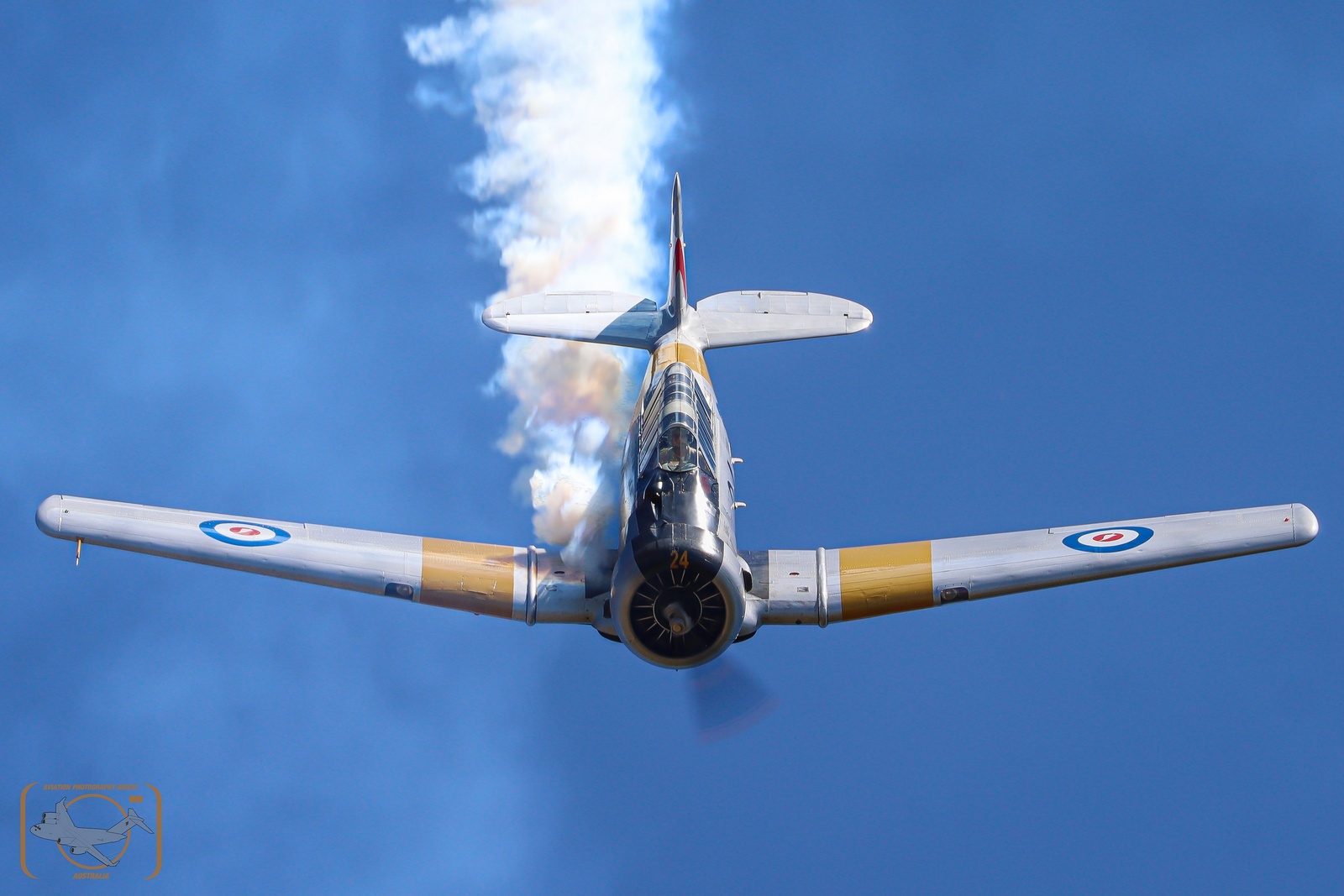
Fast forward to the Saturday morning of the show and the skies were clearing, the puddles were drying, and the crowds were eagerly filing through the gates ready for day one of WDU.
The inaugural WDU airshow was held in 2011. Temora Aviation Museum has long been known for putting on smaller events called ‘showcase days’, where a number of locally based and visiting aircraft will take to the skies to perform for the smaller scale crowds. These events have usually also included flightline walks, interviews with the pilots or hangar tours.
WDU is a much larger event, of which spectators have travelled from as far as New Zealand and the UK for the airshow. Many interstate travellers also make the journey to Temora, injecting a large boost into the region’s economy. A total of 13,000 people were noted to have attended this year’s event.
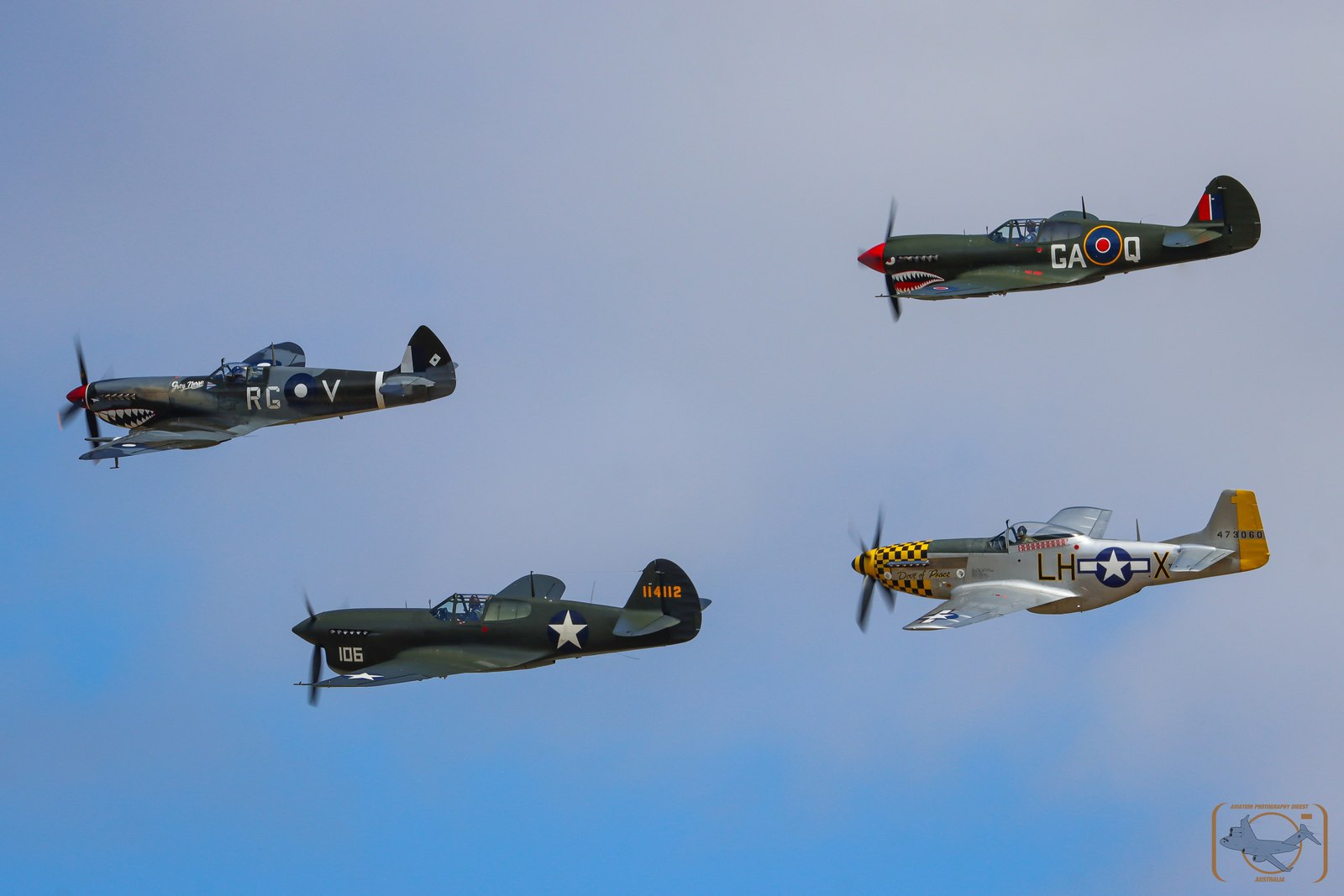
The sounds of Rolls Royce Merlin and Allison V12 engines filled the air to begin the show on each day, with a Spitfire, two P40 Kittyhawks and a P51 Mustang taking to the skies as the Historic Formation.
Stephen Death in the RAAF 100 Squadron Spitfire led Gerard Lappin in the Old Aeroplane Company’s P40F Warhawk, Allan Arthur in his P40N Kittyhawk and Doug Hamilton in his P51D Mustang. The P40F and P51D had made the journey to Temora from Tyabb and Wangaratta respectively, whilst the P40N had made the short hop up from Albury.
On the Sunday of the show, Paul Bennet piloted the Pays Aviation P40E Kittyhawk in the formation, taking the place of the P40F from the preceding day.
As with any warbird airshow, it is important to take a look at some of the more antique and vintage aircraft that have paved the way for some of the heavier V12 fighters that followed them.
Two Tiger Moths, two variants of Ryan aircraft being the STM and the PT-22 and a Chipmunk all conducted various formation and solo passes during their displays. The crowd was also treated to a Tiger Moth cutting some tight laps back and forth as it cut some of Temora’s finest toilet paper in mid air.

Australia’s only Vultee BT-13 ‘Vibrator’ is a regular performer at Temora, and WDU was no exception. Also based at Wangaratta, the BT-13 certainly makes a heap of noise when it is around, thanks to its large Pratt and Whitney R-895 radial engine.
The ‘Southern Knights’ civilian formation aerobatic team made their airshow return at WDU, with four T6 Texans, or Harvards as they are known down under. Guy Bourke, Stephen Death, Scott Taberner and Doug Hamilton make up the team.
It was mentioned that the Southern Knights had been unable to perform together since pre-COVID times, which is a testament to the skill of the names mentioned above, that they’re still able to display such a graceful routine so safely and successfully with very little time together.
Another civilian formation team and Australian airshow regular are the Heritage Trainers. Comprising 5 CT4’s and 4 Winjeels for WDU, the Heritage Trainers put on a great display of formation passes, combined with some solo aerobatics from both a CT4 and Winjeel.
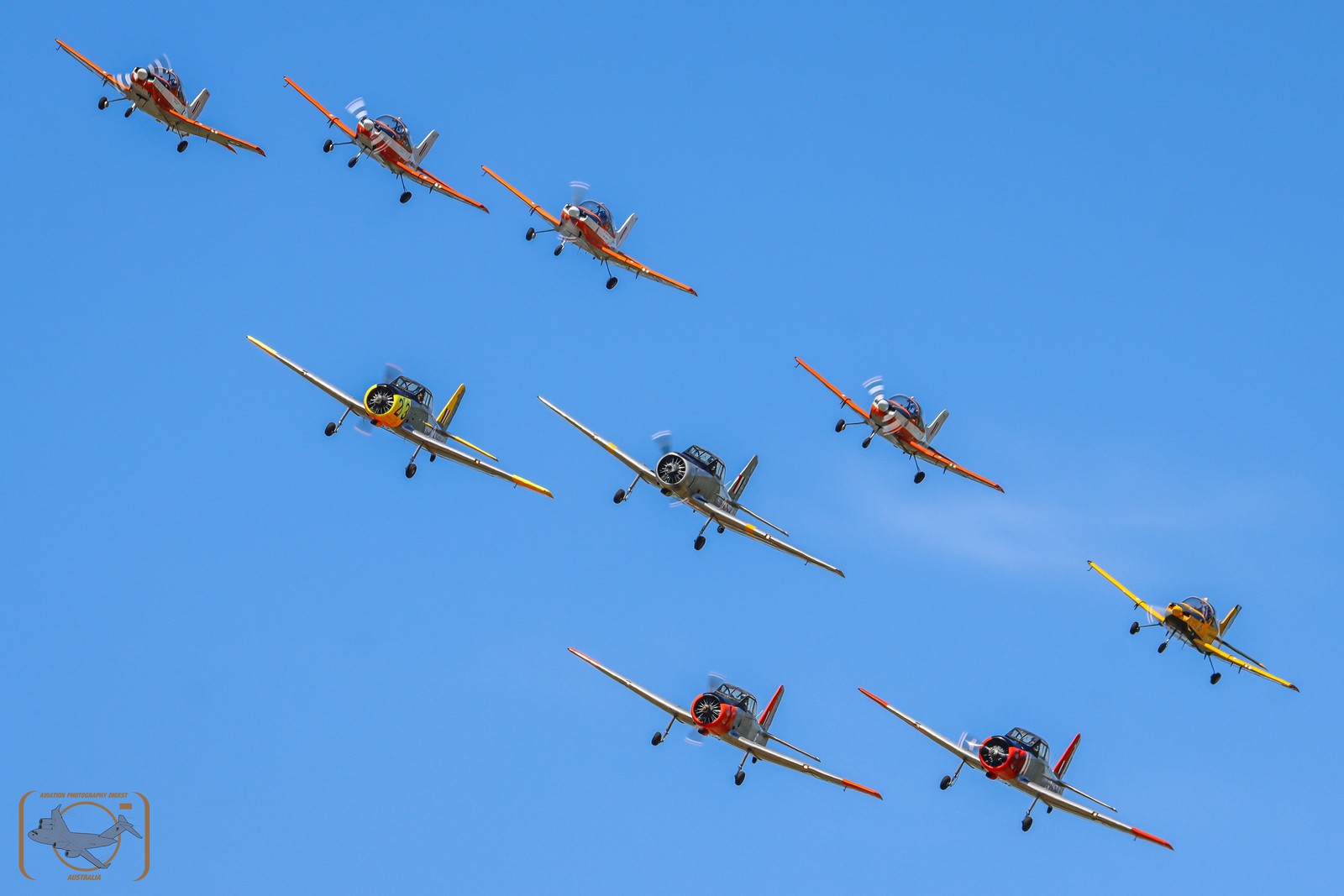
An aircraft that replaced the CT4 in Royal Australian Air Force (RAAF) service was the Pilatus PC-9. Retired from RAAF service in 2019, no PC-9 had been seen at an Australian airshow since.
At WDU this year, the Albury-based Arthur Aero Company demonstrated their (newly sold) PC-9 to the crowd, the first time a civilian PC-9 was displayed at an Australian airshow. Flown in the very capable hands of Steve Bekker, it was regarded that the PC-9 was one of the display highlights throughout the weekend.
Re-enactments from various historic pastimes are often seen at airshows, and at WDU the crowd witnessed a Vietnam war-era demonstration containing a number of aircraft from that time period.
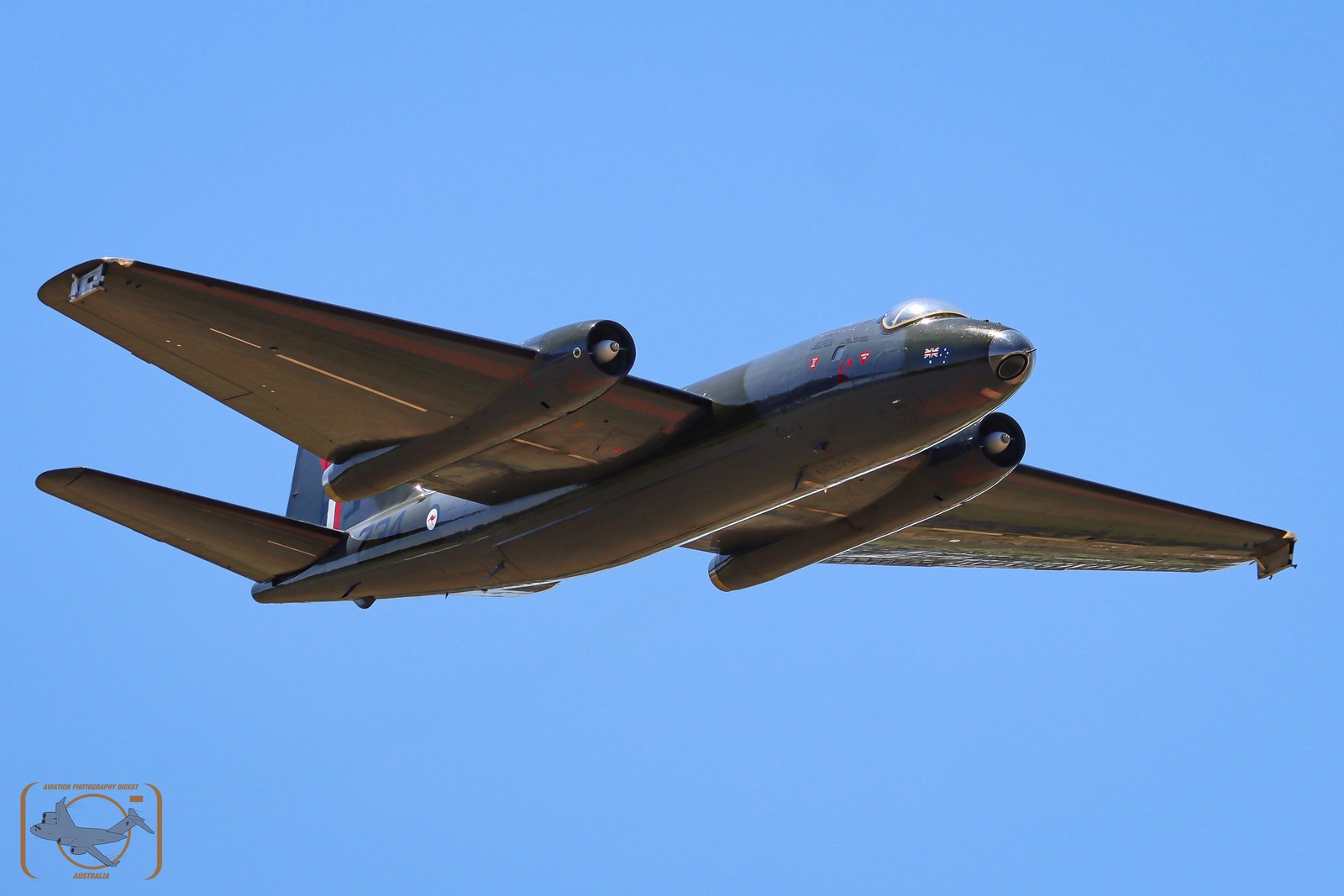
The world’s only flying English Electric Canberra was joined by the newly restored Historical Aircraft Restoration Society’s (HARS) UH-1H Iroquois (which had only made its first post-restoration flight only a few weeks prior), two Cessna 0-1 Birddogs, a DeHavilland Beaver and a T-28 Trojan. Due to a variety of reasons, unfortunately a Caribou, a Cessna 0-2 and an A37 Dragonfly were unable to take their place in the re-enactment display.
Two types of current RAAF aircraft that took part in the WDU flying program were the C130J Hercules and the Pilatus PC-21, which of course is used by the Air Force Aerobatic team the Roulettes.
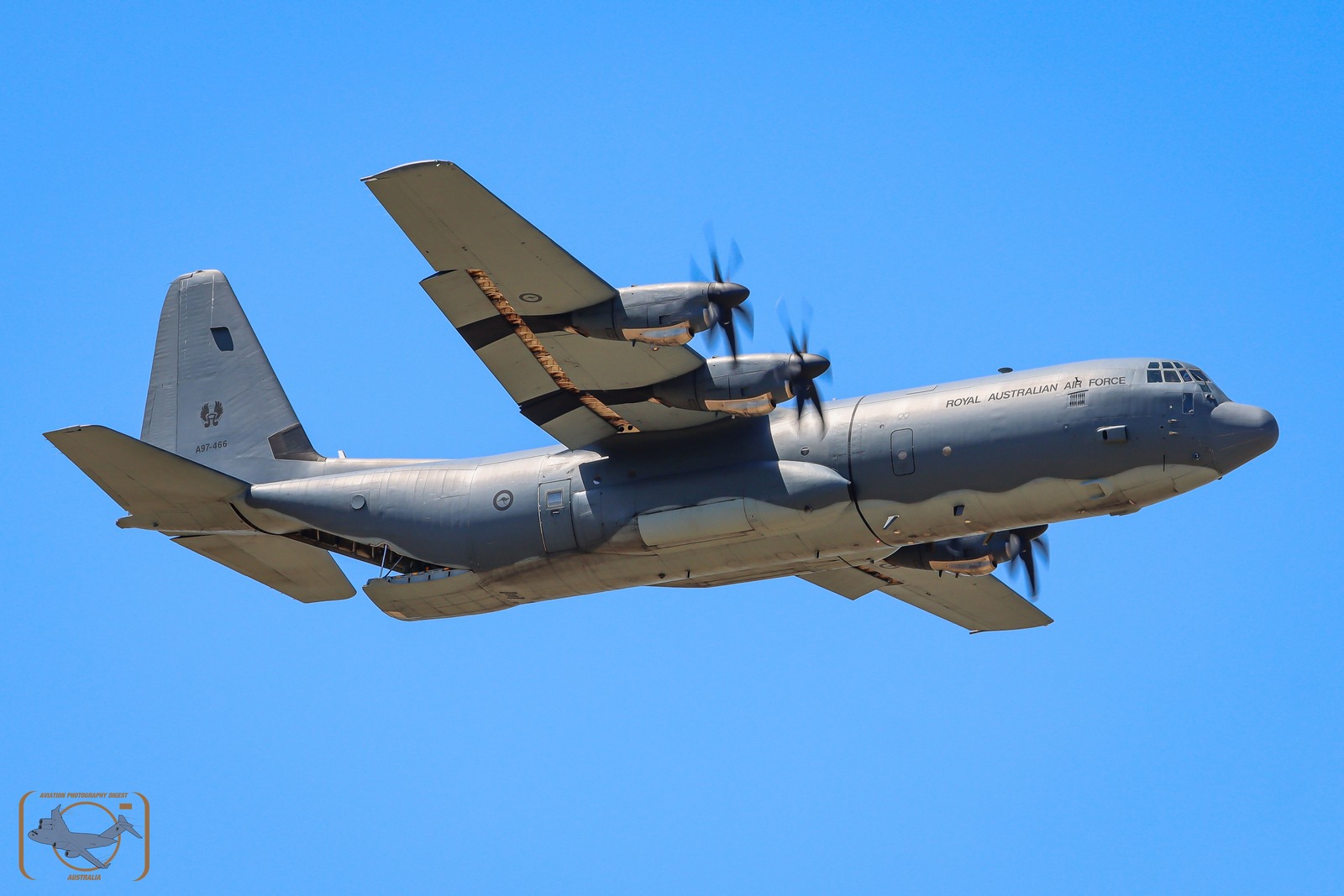
The C130J flew in from RAAF Base Richmond on both days to conduct a number of passes along the crowd line, showcasing both their high speed and slow speed capabilities.
Nearby RAAF Base Wagga played host to the six Roulettes for the weekend, who also flew in for their displays over Temora. An ever popular display amongst the crowds, especially the younger ones, the Roulettes are the face of the RAAF and fly at a large number of events throughout Australia each year. A static PC-21 was on the ground available for public inspection, alongside the RAAF 100 Squadron’s Spitfire Mk XVI, the Gloster Meteor and the CA-27 Sabre. Paul Bennet also had his Wolf Pitts Pro on display, the highest performing aerobatic biplane in the world.

Unique formations are always nice to see at any airshow, and a number of them took place at WDU.
The ‘Pacific Formation’ saw the world’s only airworthy Lockheed Hudson lead Graham Hosking’s Vought F4U-5N Corsair and Paul Bennet’s Grumman Avenger. Three big aircraft in tight formation was no doubt a highlight of the show for many.
Following a series of formation passes, the three aircraft then split off to conduct their own individual displays. Being the only airworthy example anywhere in the world, the Hudson is exhibited very carefully wherever it flies.
Graham Hosking’s Tyabb-based Corsair was expertly flown all weekend by Ben Lappin. The solo display consists of speed, noise and energy. That large Pratt and Whitney R-2800 radial engine makes this absolute brute of an aircraft a head turner any time it is flown.
Matt Henderson demonstrated the Paul Bennet Airshows Grumman Avenger, again with a stack of noise. The Avenger was the largest single engined aircraft to come out of World War II, and is the only flying example in Australia right now.
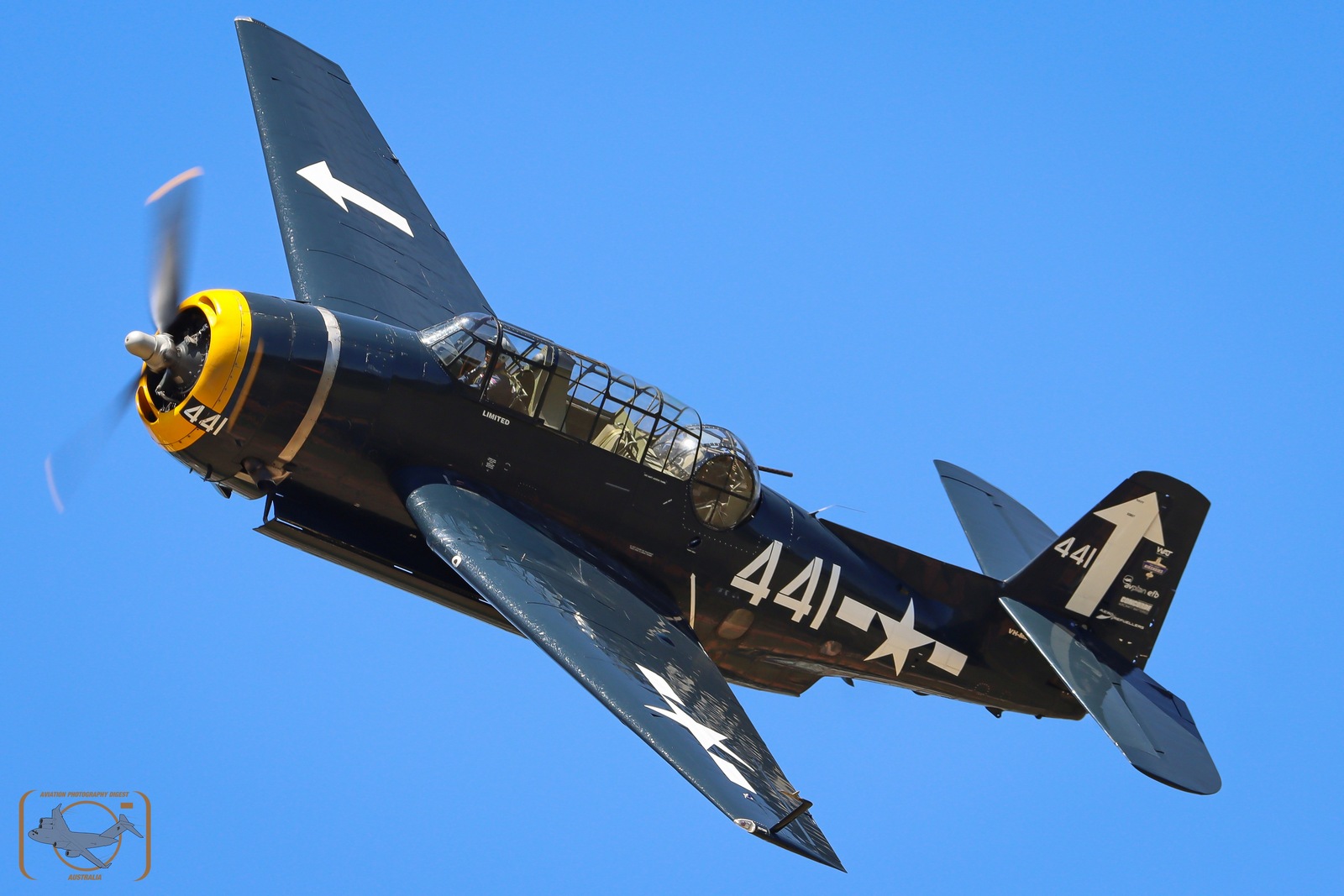
Shaped in a similar way to the Hudson, is the Beech D18. The twin engine, multi tail aircraft flew up from Wangaratta for the airshow. A unique capability of the D18 which was on show was the smoke system generated from each engine on the aircraft. It flew with two T6 Harvards in an elegant display of vintage formation flying.
The term ‘warbirds’ is very much associated with the likes of Spitfires, Kittyhawks and Mustangs. So to see all of these types come together alongside the Corsair as the penultimate display was a spectacular sight.
Led by Doug Hamilton in the P51D, was the Spitfire, the Corsair, and the three P40 Kittyhawks previously mentioned.
Also part of the formation, was the Victorian-based CA-18 Mustang VH-BOB.
After an almost 15-year restoration following a wheels up landing in 2008, ‘BOB’ made its inaugural appearance at Temora for WDU this year.
One of the more highly polished aircraft you are ever likely to see (due to the amount of time and care the team put into the aircraft), ‘BOB’ was masterfully flown by Chris Tulk throughout the weekend. It was one of the highlights for many, with some not having seen the aircraft fly since its incident back in 2008.
To close WDU 2024 was the RAAF’s frontline fighter, the F-35A Lightning II.

Beginning his display already airborne was Flight Lieutenant Kurt ‘KP’ Pearce from No. 2 Operational Conversion Unit (2OCU) based at RAAF Base Williamtown in Newcastle. An approximate 35-min flight for the F-35A meant ‘KP’ was able to make it up and back in under 90 mins.
‘KP’ demonstrated the high and low speed characteristics of the aircraft, amongst a number of tight turns and vertical climbs that included the release of flares from the aircraft, quite the sight when performed at an airshow.
Warbirds Downunder 2024 saw approximately 43 aircraft take part in the flying displays, as well as a number of static aircraft on the ground available for close-up inspection.
With blue skies, minimal wind and no rain, the show was an absolute success, and we look forward to the event returning in 2026.
APD would like to thank the team at the Temora Aviation Museum for their incredible amount of hard work in putting on such a great event. Without them, a warbird gathering of this size would not be possible in Australia.
To see all the positive feedback online following the event is a testament to WDU’s popularity, which once again will only grow and grow moving forward.
Ryan Imeson is based in Melbourne, Australia. Attending his first airshow with his father at the age of 5, he was hooked on aviation from then on. With a strong interest in military and warbird aviation, Ryan likes to attend as many airshows and exercises as he can, naming the F/A-18 Classic Hornet and the P-40 Kittyhawk as his two favourite aircraft.
He was given a Canon ‘point and shoot’ digital camera during his childhood years and hasn’t looked back, still using Canon gear to this day.
Ryan loves to promote aviation to the community in any way that he can, hoping to convert as many people to ‘avgeeks’ as possible.
Ryan can be reached at: [email protected]

